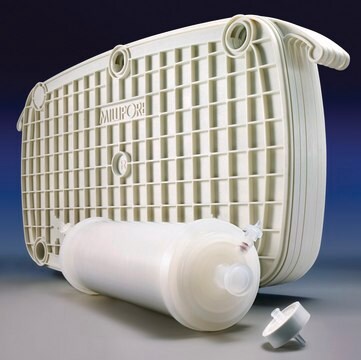8.20791
Dimethyl disulfide
for synthesis
Sinónimos:
Dimethyl disulfide, Methyl disulfide
About This Item
Productos recomendados
vapor pressure
30 hPa ( 20 °C)
Quality Level
assay
≥99.0% (GC)
form
liquid
autoignition temp.
304 °C
potency
290-500 mg/kg LD50, oral (Rat)
expl. lim.
1.1-16.1 % (v/v)
kinematic viscosity
0.594 cSt(20 °C)
mp
-85 °C
transition temp
flash point 15 °C
density
1.06 g/cm3 at 20 °C
storage temp.
2-30°C
InChI
1S/C2H6S2/c1-3-4-2/h1-2H3
InChI key
WQOXQRCZOLPYPM-UHFFFAOYSA-N
Application
- Sensor development for dimethyl disulfide detection: A study detailed the development of a delafossite CuGaO2-based chemiresistive sensor designed for sensitive and selective detection of dimethyl disulfide, highlighting its potential in environmental monitoring and industrial applications (Zhang et al., 2024).
- Odor control in food packaging: Research on active packaging materials incorporated with calcium hydroxide and modified porous medium demonstrated effectiveness in reducing carbon dioxide and controlling kimchi odor, potentially applicable to industrial food processing and storage (Jeong et al., 2024).
- Improvement of food flavor profiles: An investigation into the effects of different extraction methods on the volatile profiles of flaxseed oils emphasized the role of dimethyl disulfide in enhancing food flavors, contributing to the optimization of food processing techniques (Sun et al., 2023).
- Disease control in agriculture: A study on the alleviation of banded leaf and sheath blight in maize using bacterial volatile organic compounds, including dimethyl disulfide, suggested new pathways for plant disease management through natural chemical signaling (Yasmin et al., 2023).
- Fumigation effects on pathogen reduction: Examination of fumigation methods for the reduction of Salmonella enterica in soil highlighted dimethyl disulfide as an effective agent, offering a potential strategy for improving soil safety in agricultural settings (Gu et al., 2023).
Analysis Note
Density (d 20 °C/ 4 °C): 1.059 - 1.063
Identity (IR): passes test
signalword
Danger
Hazard Classifications
Acute Tox. 3 Inhalation - Acute Tox. 3 Oral - Aquatic Acute 1 - Aquatic Chronic 1 - Eye Irrit. 2 - Flam. Liq. 2 - Skin Sens. 1 - STOT SE 1 Inhalation - STOT SE 3
target_organs
Central nervous system, Upper respiratory tract
Storage Class
3 - Flammable liquids
wgk_germany
WGK 3
flash_point_f
59.0 °F
flash_point_c
15 °C
Certificados de análisis (COA)
Busque Certificados de análisis (COA) introduciendo el número de lote del producto. Los números de lote se encuentran en la etiqueta del producto después de las palabras «Lot» o «Batch»
¿Ya tiene este producto?
Encuentre la documentación para los productos que ha comprado recientemente en la Biblioteca de documentos.
Nuestro equipo de científicos tiene experiencia en todas las áreas de investigación: Ciencias de la vida, Ciencia de los materiales, Síntesis química, Cromatografía, Analítica y muchas otras.
Póngase en contacto con el Servicio técnico









